PrAACtical Ways to Make Decisions about Thematic Therapy Materials, Part 1

Is it just us, or have other people been blown away by the number of SLPs sharing therapy materials that they’ve designed? It seems like every time we visit sites like Facebook, Pinterest, and TeachersPayTeachers, there are more SLPs posting things that they’ve made. Most of them are incredibly adorable, reasonably priced, and even free. Many are based around a particular theme, such as a holiday or season, or a conceptual theme, such as pirates, the circus, or outer space. We love the cute graphics and fun fonts, and bet that many of you do, too.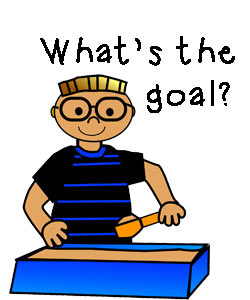
Cuteness and the ‘fun factor’ are compelling, but which ones are a good fit for your AAC therapy? In this post, we want to open a conversation with prAACtical thoughts about making solid clinical decisions when choosing therapy materials. I’ll be sharing some things that can be helpful when working with kids who have physical disabilities or developmental delay. Robin will do the second part of this post later on and focus specifically on people with ASD or other social-pragmatic considerations.
Essential Clinical Considerations
No matter what the focus of the activity or who the target population is, there are two key considerations that help in the process of deciding what materials to buy and use.
- The goal should drive the theme/activity (not the other way around). If you find that you are looking at the materials and asking ‘What can I do with this?,’ then the cart is is pretty much driving the horse. Not to say that you can’t make it work (in fact, a good SLP can teach language with practically anything), BUT well-conceptualized therapy starts with goals/objectives and designs activities around those.
- The material should be theoretically sound. Analyze the material for yourself. Don’t assume that the author knows more than you do about good therapy. Just because materials are available for download or purchase, doesn’t mean that they are well-designed. Take the time to really look at them and examine them critically relative to the needs of your individual situation.
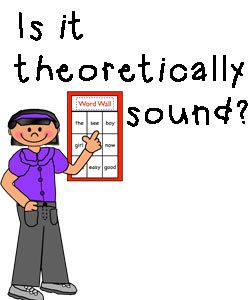 There are a lot of fun activities out there, but that doesn’t mean they make for good therapy. Choose activities and materials that are grounded in good clinical practices.
There are a lot of fun activities out there, but that doesn’t mean they make for good therapy. Choose activities and materials that are grounded in good clinical practices.
Beyond that, here are some specific questions to ask yourself about the activity or materials you are considering.
- What does the activity really accomplish? Often, this is different than the stated purpose on the website, in the instructions, or in the manual. An activity may say it is designed to teach problem-solving or certain vocabulary, for example. But if it revolves around asking questions that the learner answers, it isn’t really teaching, is it? It may be providing a venue for instruction, but asking questions isn’t a very helpful teaching strategy. (Would you like to learn quantum physics by having someone give you problems to solve? Not a very effective strategy!)
- If the activity doesn’t have a solid base of instruction built into it, you may be able to modify it if you’re confident in your ability to plan and implement good AAC teaching practices. If you’re unsure, it’s probably better to pass this up and go with something built on a firmer foundation.
- How efficient is it in accomplishing the goal you have for the AAC learner? Weigh the time it takes to complete this activity against the amount of learning that is likely to occur. An art or cooking activity may be a lot of fun, you may only able to elicit a small number of responses. That means it may not be the best choice for a goal like saying SVO sentences, which can be accomplished much more efficiently. On the other hand, if you’re trying to teach a concept like ‘measure’ by creating a rich
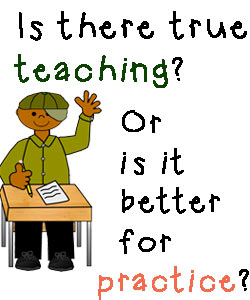 language experience, making a simple dish may be a very good idea.
language experience, making a simple dish may be a very good idea. - How can this be adapted? You may encounter activities and materials that are well-designed for goals you have in mind, but perhaps they aren’t fully accessible by the AAC learners with whom you’re working. For example, they may need a physical adaptation (e.g., All Turn It Spinner, adapted game board) or some visual supports to help explain what is expected.
- Where does this fall in the ‘big picture’ of your intervention? An activity that is highly motivating but doesn’t offer much in the way of true instruction won’t work when you are first teaching a new skill/word. However, once you’ve taught that skill/word and need to provide a lot of opportunities for practice, that same activity might fit the bill. This is where it really helps to have sized up the ‘real’ purpose of the activity.
The recent trend of therapists posting thematic therapy materials and activities online gives us a seemingly unending buffet of choices that are cute, fun, and affordable. We hope these musings help you make good decisions about the clinical materials and activities you choose for your AAC therapy. If you stick to solid clinical reasoning, you can make prAACtical choices that let you have your cake and eat it, too.
Filed under: PrAACtical Thinking
Tagged With: AAC intervention, clinical considerations, clinical decisions, intervetion, materials, pedagogy, theory, therapy
This post was written by Carole Zangari

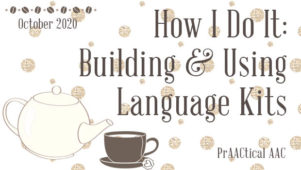
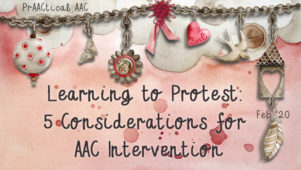
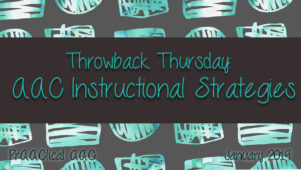
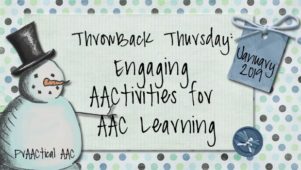
3 Comments
Carole, So many times you write the article that I have in my head! I can’t agree with you more – I feel like so many therapists spend more time thinking about their themes, games, activities, bulletin boards than their student’s goals and objectives.
Thanks for the comment! Our materials ‘set the stage’ for meaningful communication and language experiences that focus on specific objective measurable goals. However, the facilitator must know and teach the goals. We know that this is a skill that is learned through experience because less experienced clinicians are often caught up in behavior and participation issues. But the more the topic is discussed (and I am sure Carole will also comment) the more it will make goals become the main focus. I learned this concept many many years ago from Dr. Amy Wetherby who wrote on my early graduate school clinical feedback- “great activity but what’s the point? (somewhat embarrassing to share but it really helped me never forget this concept).
Carol, I had an experience similar to Robin’s back in my grad school clinical days. It was scrawled in red across my feedback sheet: “Nice activity but where’s the therapy??” Ugh! Big pit in my stomach just thinking back to those days! I think one way to impact this is to focus on the therapeutic PROCESS, which is what we tried to do our focus on vocabulary teaching sequence in November. We should be able to think and talk about how activities fit within an entire process (goal setting, scope, sequence, teaching methods, assessment). If we can latch on to that way of thinking about the therapeutic process in AAC, then selecting and plugging in fun activities will be the icing on an already delicious cake. Thanks for taking the time to comment.